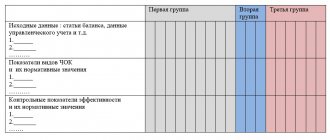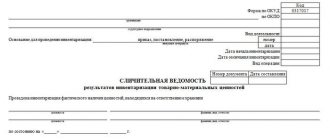What is the procedure for approving and formalizing the payment of dividends to an LLC? What difficulties may arise if dividends are paid out of proportion to the shares of LLC participants?
The civil legislation of the Russian Federation does not contain a clear definition of “dividends”.
In particular, in the Law “On Limited Liability Companies” (Law No. 14-FZot 02/08/1998) the concept of “dividends” is absent. This Law deals only with the distribution of income between participants.
What it is
Dividend is a payment paid to shareholders at the end of the year. The company makes this payment at the expense of its profits. It is calculated in this way - the more the company earned during the year of operation, the higher the dividend rate will be.
There are also types of dividends that are paid to shareholders regardless of the company's earnings, namely, they are paid in the case of preferred shares.
The company cannot always pay dividends to shareholders, therefore, it must provide a special fund into which funds are regularly transferred in order to be able to pay shareholders in the event that there is no profit.
Types and classification
Dividends have the following classification:
- by type of shares. Privileged and ordinary. The first ones are usually higher, this is due to the fact that they are enshrined in the charter of the enterprise. Plus, preferred shares affect the order in which dividends are received. They will not have to wait for several months, as in some cases with a regular one;
- according to the size of payments - they are full (paid in full once a year) and partial (paid in parts, several times a year), respectively;
- according to the frequency of payment - once a year, once a quarter, once every six months, and so on;
- according to the method of payment of dividends. They can be divided into: cash dividends;
- dividends in the form of company property, which are paid in the form of shares.
As you can see, there are many types of dividend payments.
Payment of dividends at the end of the year: general principles
The decision on the distribution of net profit is made by persons who participate in the authorized capital of the organization.
Their composition depends on the organizational and legal form of the legal entity and the number of participants. The dividend payment schedule in 2021 can be set at the discretion of the owners. Part of the profit can be paid:
- quarterly,
- semiannually,
- once a year.
Distribution of profits between participants is not allowed if:
- the company has signs of insolvency (bankruptcy),
- the value of net assets is less than the value of the authorized capital, or will become so as a result of the distribution and transfer of profits.
When transferring part of the profit to a participant, a payment order is issued in accordance with the general procedure. The recipient of the funds transfer and his bank details are indicated. It is necessary to correctly specify the purpose of the payment when paying dividends to the founder so that the transfer can be clearly qualified by the bank and regulatory authorities. For example, like this:
“Transfer of part of the net profit to the participant in accordance with the Minutes of the meeting of shareholders No. 1 dated May 11, 2018.”
Please note that to confirm the legality of the money transfer, the bank has the right to request a copy of the specified Protocol.
Sample order for payment of dividends to the sole founder
As mentioned earlier, dividends can be paid quarterly, semi-annually, or annually. And, in order to pay dividends to the sole founder, it is necessary to draw up an order.
It must contain the following subparagraphs:
- the place of the meeting, as well as its date;
- number, and, of course, date of the protocol;
- all the issues that were on the agenda;
- personal signatures of everyone and shareholders;
- the amount of dividends to be paid;
- in what form they will be paid.
A sample of such an order can be found here. But there is no exact, specific document. Therefore, you can often see forms that are used when receiving money from a bank, or transferring it there to another account.
Payments of dividends on shares in 2021
The decision to pay dividends to a joint stock company is made by the general meeting of shareholders. To do this, it is necessary to initiate a meeting. This can be done by the board of directors or another person determined by the charter.
The board of directors submits a proposal on the amount and procedure for distribution of profits for consideration by the general meeting of shareholders. Based on the results of the consideration and voting of shareholders, a Protocol on the results of the meeting is drawn up, which reflects the decision to transfer income to shareholders. This document is the basis for the transfer.
Part of the profit can only be paid to the shareholder by bank transfer. There is no need to issue a separate transfer order. The previously listed documents are sufficient. But if it is provided for by the organization’s document flow, then its preparation is not prohibited.
Order for payment of dividends, sample
Payments
As mentioned earlier, payments to shareholders are made regularly, but at a certain period - for example, once a year or quarter. The profit paid by the company can be divided among shareholders in proportion to their shares, or, regardless of the shareholder's share.
For example, if the shareholder's share is 25%, then dividends will be paid in the amount of 25% of profits. What the payment will be for participants should be written down in the documents at the stage of creating the company, or by making changes to an already existing document.
Frequency and order
We have already discussed the frequency of dividend payments in the subheadings above (remember, every year, six months or quarterly), so let’s look at the procedure for their payment.
Almost all over the world, the procedure for paying dividends is the same; it includes:
- the date of their announcement;
- ex-dividend date. Determine the persons who will receive dividends (meaning that they bought the company's shares before the announcement day);
- census day - on this day shareholders who will receive a profit are registered;
- date of payment.
This is exactly the payment procedure. Of course, there are exceptions or amendments.
Restrictions
There are a number of rules under which a company does not have the right to pay profits to shareholders, and, as with any monetary transactions, there are some restrictions when paying dividends, namely:
- the company does not have the right to pay dividends if at the time of payments it is bankrupt, or will be so after making payments;
- without paying the entire authorized capital;
- until all shares are repurchased;
- and, in many other cases, which are provided by law.
Video: Bonus procedure
Deadlines
The timing of dividend payments may change annually, but they are usually approximately the same. Let's start from the very beginning, as you already know, there are JSC (joint stock company) and LLC (limited liability company).
Usually, they have different payment deadlines, namely, for the first (JSC) the deadline is set after the date of composition of shareholders - 25 working days for all shareholders and 10 working days for nominee holders and trustees.
For an LLC, 60 days after the decision is made. Sometimes, the period may be set within these 60 days, but if it was not, then the shareholder will receive the profit after the originally specified sixty day period.
How to get a cash loan from VTB 24? Where can I get a loan of 300,000 rubles without certificates and guarantors? More details here.
How to reflect dividend payments on the balance sheet
The decision to transfer part of the profit to participants affects line 1370 “Retained earnings” of the balance sheet. When deciding on the distribution of the net financial result, the amount reflected in it is reduced.
In addition, the amount of income paid to the founders must be reflected in the Statement of Changes in Capital in the appropriate line.
The company that receives income from participation in the authorized capital reflects the amount received in the Statement of Financial Results. For this purpose, in this form of financial statements there is a separate line 2310 “Income from participation in other organizations.”
Sample protocol format
The protocol is equally important. You can see an exact sample of the dividend issuance protocol here.
As you can see, the protocol must necessarily include the following data:
- date and time of opening of the meeting;
- location;
- number of participants;
- the number of persons present at the meeting;
- names of those present;
- agenda;
- offers;
- productions;
- names of chairmen and secretaries.
Also, if any voting was held at the meeting, the name of the person who counted those votes must be written.
Taxation
When paying dividends to shareholders, the company must also take taxation into account. It represents an important part of the transaction. Thus, the company must calculate the tax, withhold it and transfer it to the budget. It can carry out one of the possible types of taxation - simplified taxation system, UTII, unified agricultural tax or general taxation.
You can calculate the amount of tax on dividends using the formula - dividends that were accrued to the shareholder are multiplied by the tax rate. But this formula only works if the company itself does not receive dividends.
Accrual and payment of dividends, postings
The organization conducts settlements with the founders on account 75 of accounting.
Postings for payment of dividends to the founder
| Operation | Debit | Credit |
| The amount to be transferred to the participant has been accrued | 84 | 75 |
| Withholding tax on income (personal income tax or profit) | 75 | 68 |
| Transfer made to the founder | 75 | 51, 50 |
| Withheld taxes transferred to the budget | 68 | 51 |
If your organization is the founder of another company and received income from participation, then you need to reflect this operation as follows:
| Operation | Debit | Credit |
| Income received from participation | 51 | 76 |
| Funds received from participation in the authorized capital are reflected in income | 76 | 91 |
Foreign dividends
It often happens that one or even several investors in a company are foreign residents or organizations, so how will taxation proceed when dividends are accrued to them? If one of your shareholders is from another country, then the tax must be calculated according to the same scheme as in the previous subheading.
If you are a shareholder and you receive dividends from a foreign company, then there are a number of features under which you will not have to pay personal income tax on the profits received.
Dividend tax 2021
Taxes on dividends to the founder in 2021 are calculated depending on who is paid to: an individual or an organization.
Payment of dividends to the founder - organization is subject to income tax. Moreover, the payer acts as a tax agent, that is, he must withhold and transfer the tax to the budget. As a general rule, the rate is 13% (clause 2, clause 3, Article 284 of the Tax Code of the Russian Federation). But if the owner owns at least half of the authorized capital for at least one year, then the rate is set at 0% (clause 1, clause 3, article 284 of the Tax Code of the Russian Federation).
Income paid to the founder - an individual - is subject to personal income tax at a rate of 13% if he is a resident of the Russian Federation. If the owner is a non-resident, then the transfer of part of the net financial result to him will be taxed at a rate of 15% (paragraph 2, paragraph 3, article 224 of the Tax Code of the Russian Federation).
The tax calculation does not depend on the dividend payment calendar for 2021. For each transfer, the tax is calculated separately, and not on an accrual basis from the beginning of the year. To calculate, use the formula:
If your company itself receives income from participation in affiliated companies, then they must be taken into account when calculating the tax on amounts paid to the founders:
Causes and consequences of non-payment
It is often possible to encounter non-payment of dividends. But there are some reasons for this too. This situation occurs when a company does not have a net profit, and also does not have a standard, approved annual report, as well as an accounting report.
They are the ones who can reflect the losses that the company has suffered.
If the company does not have these documents, it has the right not to pay dividends. But, nevertheless, the difficult financial condition of the company is not the reason for the non-payment of previously announced profits to shareholders.
The consequence of non-payment may be the company being brought to administrative liability, as well as the accrual of interest on the amount of unpaid dividends.
Recipients
Dividends are paid to both shareholders and those who own nominal shares. All of them must be entered into a special register. Also, a nominee holder may be entered in the previously mentioned register.
If there is one, then the entire amount of dividends is first transferred to him, and then he must transfer them to all other shareholders. At the same time, there are some nuances, because not all shareholders can ultimately make a profit. It all depends on when exactly you were added to the list, before or after the announcement of dividends.






